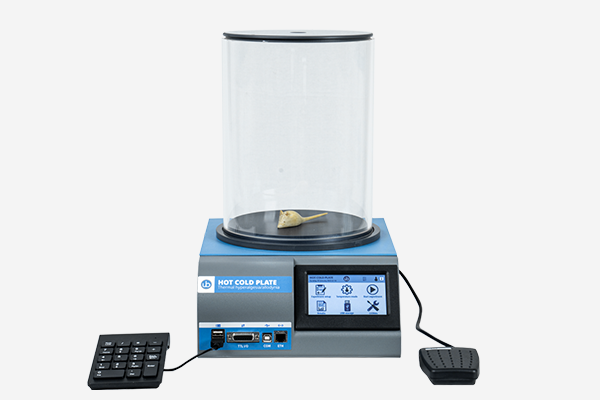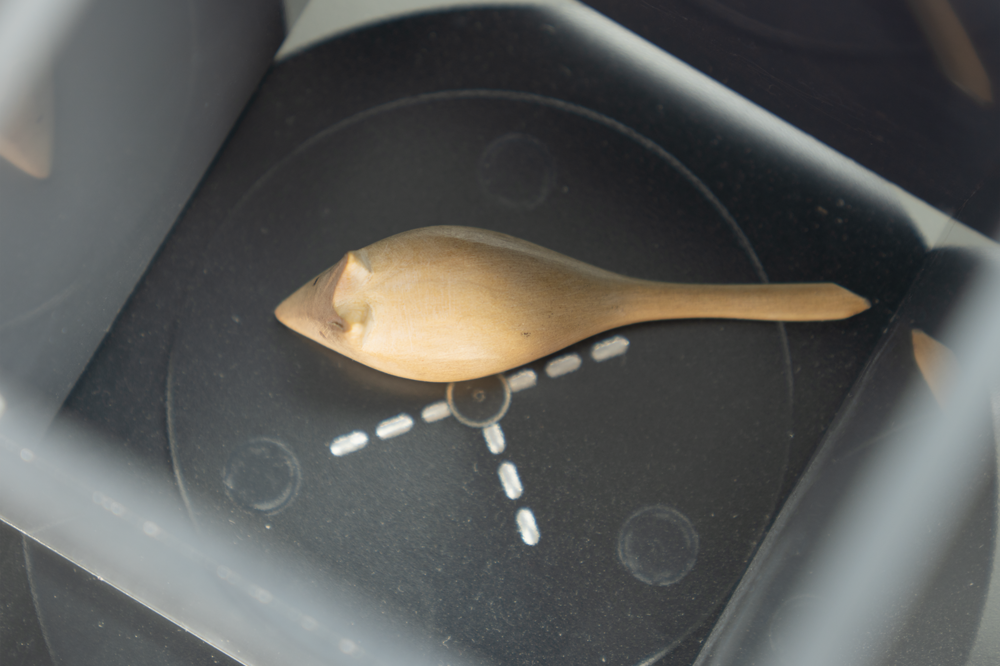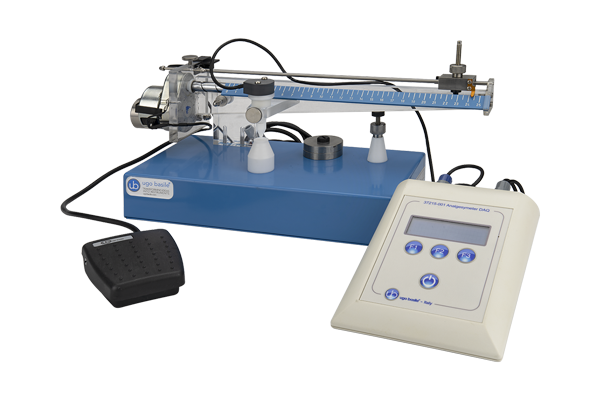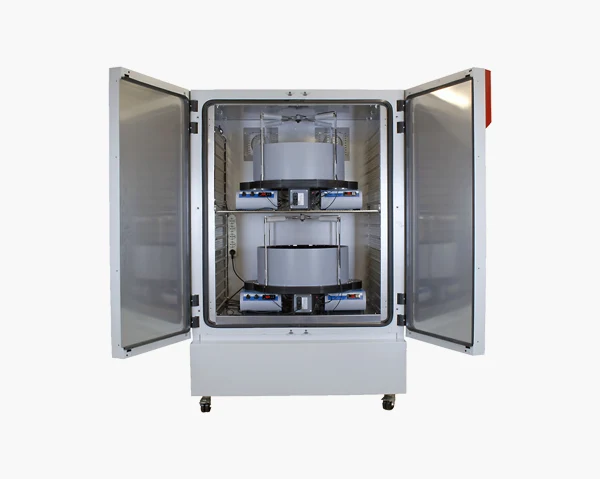Ugo Basile device and history in the Fibromyalgia Awareness Day

Ugo Basile device and history in the Fibromyalgia Awareness Day: Shedding Light on a Complex Pain Condition
May 12th is Fibromyalgia Awareness Day, an important opportunity to raise awareness about a chronic condition that affects millions of people worldwide. Fibromyalgia is a long-term syndrome characterized by widespread musculoskeletal pain, fatigue, sleep disturbances, cognitive issues, and mood disorders such as anxiety and depression. Despite its high prevalence, affecting an estimated 2-4% of the global population, predominantly women, fibromyalgia remains poorly understood and often misdiagnosed.
What makes fibromyalgia especially challenging is its nociplastic nature: the pain experienced does not stem from clear tissue damage or inflammation but rather from dysfunctions in pain processing pathways in the central nervous system. Patients report debilitating pain, even when diagnostic tests and imaging appear normal. This disconnect between symptoms and measurable pathology often leads to stigma and delays in treatment, exacerbating the burden on those affected.
The Role of Scientific Research in Understanding and Treating Fibromyalgia
Scientific research plays an essential role in unraveling the biological, neurological, and psychological mechanisms behind fibromyalgia. Unlike conditions with easily identifiable biomarkers, fibromyalgia demands complex preclinical and clinical investigations to explore how pain signals are processed, amplified, and maintained in the absence of visible injury.
Preclinical research using animal models allows scientists to simulate fibromyalgia-like symptoms in controlled environments. These models help study both reflexive responses(like mechanical allodynia and thermal hyperalgesia) and non-reflexive behaviors (such as anxiety and depression-like states) commonly reported by patients. Such studies are crucial for developing and testing new pharmacological treatments, especially given the limited effectiveness of current drugs for fibromyalgia and the high sensitivity of patients to side effects.
How Ugo Basile Supports Preclinical Research in Fibromyalgia
Ugo Basile, a pioneer in scientific instrumentation for behavioral neuroscience and pain research, offers a comprehensive suite of precision tools that are widely used in fibromyalgia-related preclinical studies. These instruments allow researchers to measure both reflexive pain responses (such as hypersensitivity to heat and mechanical stimuli) and non-reflexive responses (such as anxiety- and depression-like behaviors), which together provide a fuller picture of fibromyalgia-like conditions in animal models.
Reflexive Responses: Quantifying Pain Sensitivity
Fibromyalgia models often present with thermal hyperalgesia and mechanical allodynia, two hallmark signs of altered pain perception. Ugo Basile provides validated instruments to measure these phenomena with accuracy and consistency:
Plantar Test (Hargreaves Apparatus):
This device measures paw withdrawal latency in response to a radiant heat source, helping quantify thermal hyperalgesia. Reduced latency times are interpreted as increased sensitivity to heat, a common symptom in fibromyalgia models.
More info: https://ugobasile.com/products/categories/pain-and-inflammation/plantar-test-for-thermal-stimulation
Dynamic Plantar Aesthesiometer:
This automated tool applies a mechanical force to the paw, enabling researchers to assess mechanical allodynia. The gradual increase in force and the automatic detection of withdrawal threshold reduce operator bias and increase data reproducibility.
More info: https://ugobasile.com/products/categories/pain-and-inflammation/dynamic-plantar-aesthesiometer-for-mechanical-stimulation
Analgesy-Meter Randall-Selitto test:
Measures the force on a rat or mouse paw according to the Randall-Selitto paw-pressure test, it enables rapid and precise screening of analgesic drugs for anti-nociceptive studies
More Info: https://ugobasile.com/products/categories/pain-and-inflammation/analgesy-meter
Hot/Cold Plate

The Ugo Basile Hot/Cold Plate is a versatile instrument designed to evaluate thermal nociception in rodent models, making it particularly valuable in fibromyalgia research. With a broad temperature range from -5°C to +65°C and the ability to operate in both fixed and ramping modes, it allows researchers to assess both thermal hyperalgesia and allodynia.
More info: https://ugobasile.com/products/categories/pain-and-inflammation/hot-cold-plate-screening-of-thermal-hyperalgesia-allodynia
Non-Reflexive Responses: Assessing Mood and Emotional Disturbances
In addition to sensory abnormalities, fibromyalgia is often associated with affective symptoms such as anxiety and depression. These are evaluated in animal models using behavioral paradigms that reflect emotional processing and motivation, areas where Ugo Basile instrumentation also plays a key role:
- Open Field Test: This test assesses both general locomotor activity and anxiety-like behavior. Animals are placed in a novel open arena, and metrics such as time spent in the center vs. periphery and number of crossings are recorded—indicators of anxiety and exploratory behavior. https://ugobasile.com/products/categories/mazes-tracking/open-fields
- Light/Dark Box Test: Based on the natural aversion of rodents to brightly lit areas, this test measures the time spent in light vs. dark compartments. A preference for the dark area and delayed entry into the light zone reflect heightened anxiety levels. https://ugobasile.com/products/categories/mazes-tracking/light-dark-box-for-mice-and-rats
- Forced Swimming Test: Used to assess depression-like behavior, this test measures the time an animal remains immobile while placed in a water-filled cylinder. Prolonged immobility is interpreted as behavioral despair, mirroring depressive states seen in fibromyalgia patients. https://ugobasile.com/search/porsolt-forced-swim-test
Scientific Studies Using Ugo Basile Instruments in Fibromyalgia Research
The recent study titled "Novel Trajectories Towards Possible Effects of Semaglutide for Amelioration of Reserpine-induced Fibromyalgia in Rats: Contribution of cAMP/PKA/p-CREB and M1/M2 Microglia Polarization", published in the Journal of Neuroimmune Pharmacology, investigates the therapeutic potential of semaglutide, a GLP-1 receptor agonist, in alleviating fibromyalgia-like symptoms induced by reserpine in rats.
In this experimental model, reserpine administration induced fibromyalgia-like symptoms such as hyperalgesia, depressive behavior, and motor dysfunction. Treatment with semaglutide significantly improved these symptoms, demonstrating both analgesic and antidepressant effects. On a molecular level, semaglutide modulated the cAMP/PKA/p-CREB signaling pathway and promoted microglial polarization toward the M2 phenotype, which is associated with anti-inflammatory activity. Additionally, there was a downregulation of pro-inflammatory markers such as CD86 and an upregulation of anti-inflammatory markers like CD163 in the spinal cord.
To assess behavioral and sensory responses in the animals, the study utilized various tools to measure hyperalgesia and allodynia. Although the specific models are not mentioned, studies of this kind commonly use devices such as the Ugo Basile Analgesy-Meter to evaluate mechanical pain thresholds by applying increasing pressure until a withdrawal response occurs. For thermal hyperalgesia, the Hot Plate Test from Ugo Basile is often employed, which records the latency to a pain response when the animal is placed on a heated surface.
These instruments are crucial for accurately quantifying nociceptive responses in preclinical models of chronic pain, such as reserpine-induced fibromyalgia.
This study suggests that semaglutide may represent a promising therapeutic strategy for fibromyalgia, due to its analgesic and anti-inflammatory effects mediated by intracellular signaling modulation and microglial polarization. The use of precise pain evaluation instruments, such as those provided by Ugo Basile, is essential for validating the effectiveness of such interventions in preclinical research.
Link to the open access article https://link.springer.com/article/10.1007/s11481-025-10196-4
The study “Long-lasting reflexive and nonreflexive pain responses in two mouse models of fibromyalgia-like condition”, published in Scientific Reports (Nature Portfolio), investigates two well-characterized murine models that mimic human fibromyalgia: the Reserpine-Induced Myalgia (RIM) and Acid Saline Injection (ASI) models. These models were evaluated for both reflexive pain responses (thermal hyperalgesia and mechanical allodynia) and non-reflexive pain-related behaviors (anxiety and depression-like symptoms).
Among the three RIM protocols tested (RIM3, RIM4, and RIM6), the RIM6 model, consisting of six reserpine injections over three weeks, produced the most persistent symptoms, with both reflexive and nonreflexive responses lasting up to six weeks. Similarly, the ASI model demonstrated sustained responses up to five weeks. Both models also showed spinal cord gliosis (activation of astrocytes and microglia), a hallmark of central sensitization in chronic pain.
Importantly, the study validated the efficacy of pregabalin, an FDA-approved drug for fibromyalgia, which attenuated thermal hyperalgesia in both models, further supporting their translational relevance.
To assess reflexive pain responses, the study employed the Plantar Test (Hargreaves Apparatus) by Ugo Basile, a key tool in preclinical pain research. This device measures the latency of hind paw withdrawal in response to a radiant heat source, allowing researchers to quantify thermal hyperalgesia with high precision.
The Plantar Test was critical in showing that:
- RIM6 mice displayed significantly reduced withdrawal latency up to 6 weeks, indicating long-lasting thermal hyperalgesia.
- ASI mice showed thermal hypersensitivity lasting up to 5 weeks.
The data gathered through this instrument were central to confirming the duration and severity of pain symptoms across models, and for evaluating the pharmacological effects of pregabalin.
In addition to reflexive assessments, behavioral tests such as the Open Field, Dark/Light Box, and Forced Swimming Test were used to capture non-reflexive symptoms. Although the paper does not mention specific hardware for these tests, Ugo Basile also manufactures equipment for behavioral phenotyping that is commonly used in this type of research.
This is the first study to demonstrate long-term (5–6 weeks) reflexive and nonreflexive fibromyalgia-like symptoms in mice, along with corresponding neuroinflammatory markers. The findings position the RIM6 model, in particular, as a robust tool for studying chronic nociplastic pain and testing new pharmacological treatments.
The application of Ugo Basile’s Plantar Test played a pivotal role in quantifying thermal pain sensitivity, underlining the importance of precise and reproducible tools in the advancement of fibromyalgia research.
Link to the complete open access article https://www.nature.com/articles/s41598-022-13968-7#Sec9





